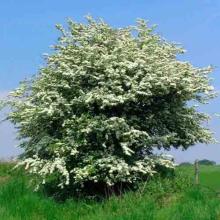Chaenomeles speciosa
Common name:
Flowering quince
Genus:
Chaenomeles
Family:
Rosaceae
Order:
Rosales
Crataegus monogyna
Common name:
Common hawthorn
Genus:
Crataegus
Family:
Rosaceae
Order:
Rosales
Chaenomeles speciosa
Common name:
Flowering quince
Genus:
Chaenomeles
Family:
Rosaceae
Order:
Rosales
Crataegus monogyna
Common name:
Common hawthorn
Genus:
Crataegus
Family:
Rosaceae
Order:
Rosales
Chaenomeles speciosa
Common name:
Flowering quince
Genus:
Chaenomeles
Family:
Rosaceae
Order:
Rosales
Crataegus monogyna
Common name:
Common hawthorn
Genus:
Crataegus
Family:
Rosaceae
Order:
Rosales
Family (Plantae): Rosaceae
Rosaceae /roʊˈzeɪʃiː/, the rose family, is a medium-sized family of flowering plants, including 4,828 known species in 91 genera.
The name is derived from the type genus Rosa. Among the most species-rich genera are Alchemilla, Sorbus, Crataegus, Cotoneaster, Rubus, and Prunus which contains the plums, cherries, peaches, apricots, and almonds. However, all of these numbers should be seen as estimates – much taxonomic work remains.
The family Rosaceae includes herbs, shrubs, and trees. Most species are deciduous, but some are evergreen. They have a worldwide range, but are most diverse in the Northern Hemisphere.
Many economically important products come from the Rosaceae. It includes many edible fruits, such as apples, pears, quinces, apricots, plums, cherries, peaches, raspberries, loquats, strawberries, rose hips, hawthorns and almonds. It also includes popular ornamental trees and shrubs, such as roses, meadowsweets, rowans, firethorns and photinias.
Distribution
The Rosaceae have a cosmopolitan distribution, being found nearly everywhere except for Antarctica. They are primarily concentrated in the Northern Hemisphere in regions that are not desert or tropical rainforest.
Historical taxonomy
The family was traditionally divided into six subfamilies: Rosoideae, Spiraeoideae, Maloideae (Pomoideae), Amygdaloideae (Prunoideae), Neuradoideae, and Chrysobalanoideae, and most of these were treated as families by various authors. More recently (1971), Chrysobalanoideae was placed in Malpighiales in molecular analyses and Neuradoideae has been assigned to Malvales. Schulze-Menz, in Engler's Syllabus edited by Melchior (1964) recognized Rosoideae, Dryadoideae, Lyonothamnoideae, Spireoideae, Amygdaloideae, and Maloideae. They were primarily diagnosed by the structure of the fruits. More recent work has identified that not all of these groups were monophyletic. Hutchinson (1964) and Kalkman (2004) recognized only tribes (17 and 21, respectively). Takhtajan (1997) delimited 21 tribes in 10 subfamilies: Filipenduloideae, Rosoideae, Ruboideae, Potentilloideae, Coleogynoideae, Kerroideae, Amygdaloideae (Prunoideae), Spireoideae, Maloideae (Pyroideae), Dichotomanthoideae. A more modern model comprises three subfamilies, one of which (Rosoideae) has largely remained the same.
While the boundaries of the Rosaceae are not disputed, there is no general agreement as to how many genera it contains. Areas of divergent opinion include the treatment of Potentilla s.l. and Sorbus s.l.. Compounding the problem is that apomixis is common in several genera. This results in an uncertainty in the number of species contained in each of these genera, due to the difficulty of dividing apomictic complexes into species. For example, Cotoneaster contains between 70 and 300 species, Rosa around 100 (including the taxonomically complex dog roses), Sorbus 100 to 200 species, Crataegus between 200 and 1,000, Alchemilla around 300 species, Potentilla roughly 500, and Rubus hundreds, or possibly even thousands of species.
Reference: Wikipedia


